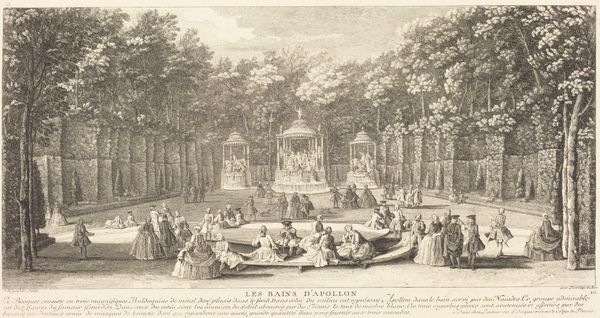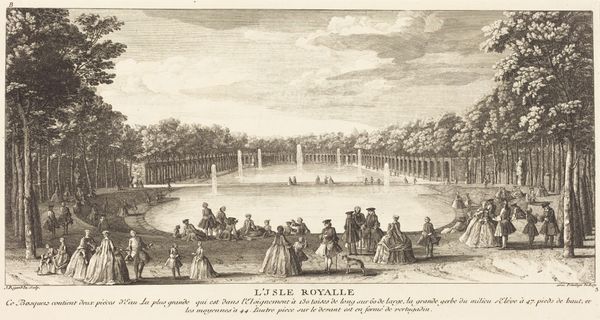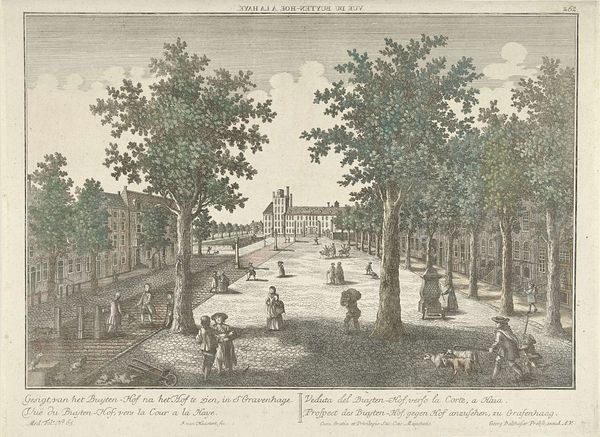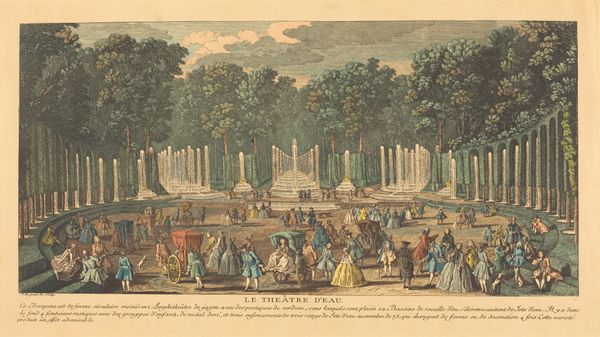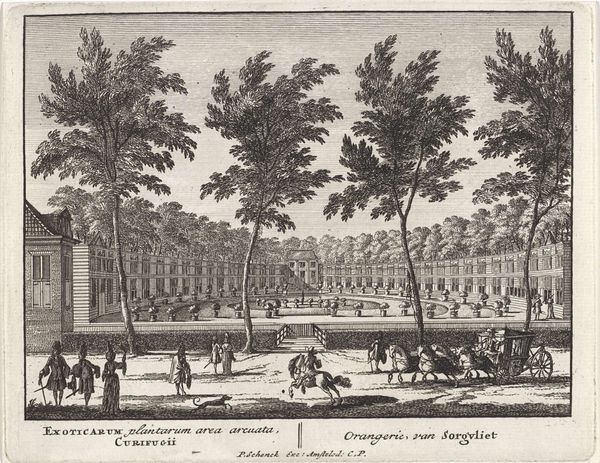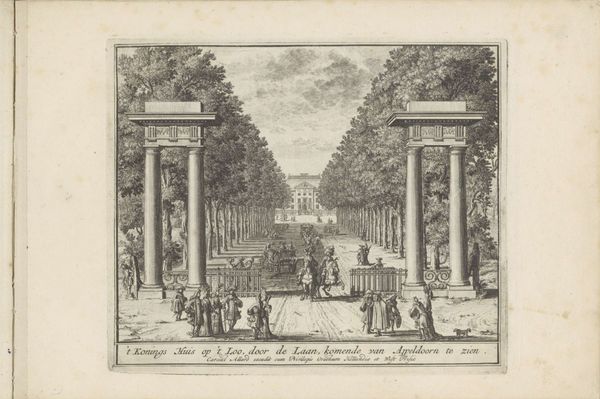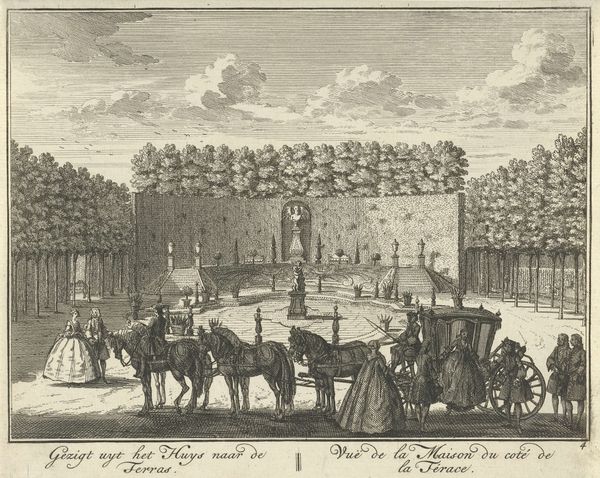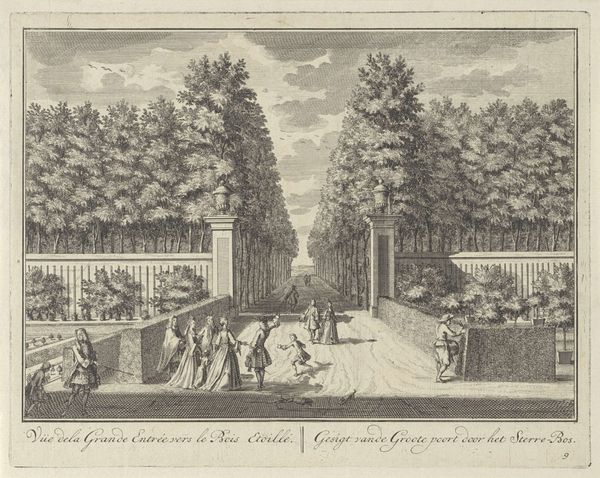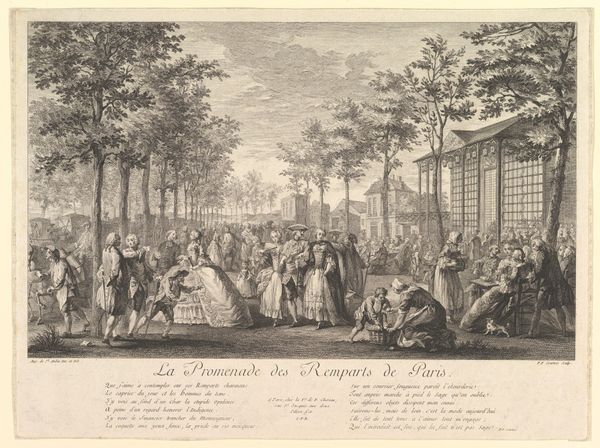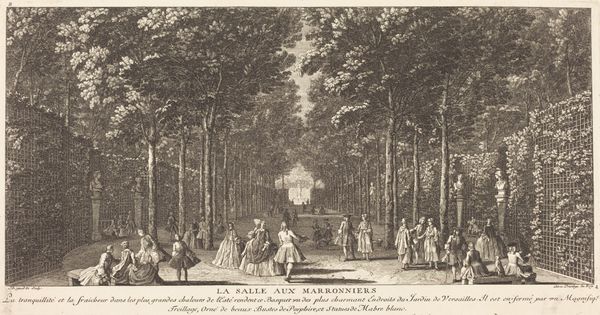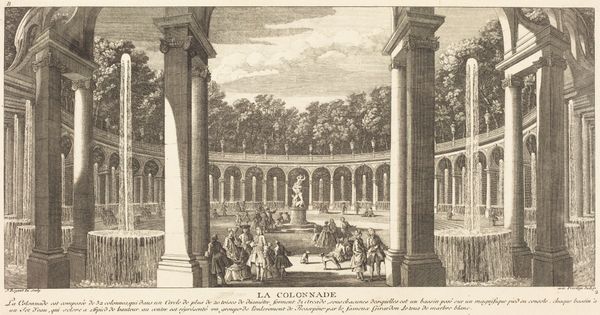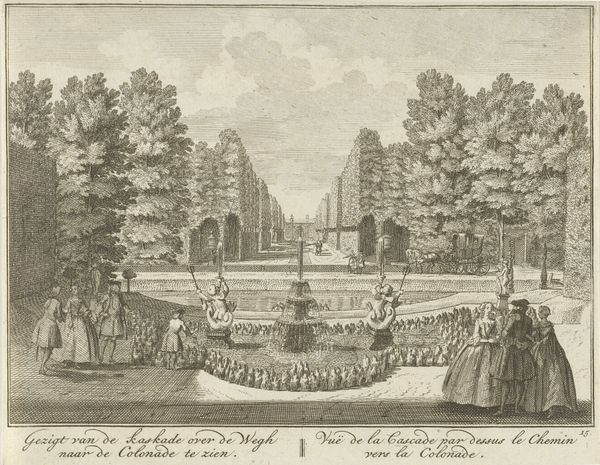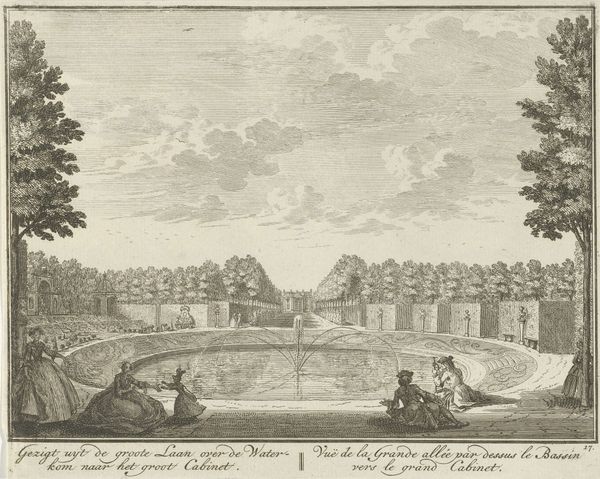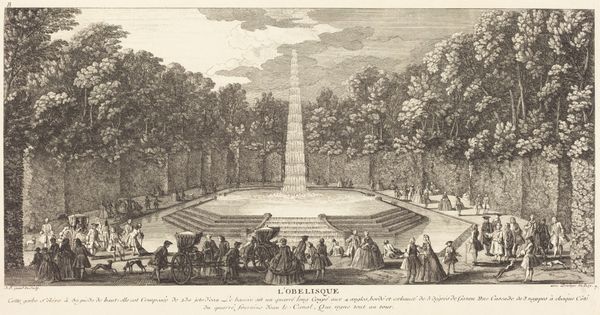
print, etching, engraving
#
baroque
# print
#
etching
#
old engraving style
#
landscape
#
genre-painting
#
engraving
Copyright: National Gallery of Art: CC0 1.0
Curator: What an intricately wrought scene! This is an engraving titled "Le Théâtre d'Eau" or "The Water Theatre", made by Jean-Baptiste Rigaud. Editor: It feels…oppressive, actually. The density of figures, hemmed in by the rigid architecture and regimented trees...there's a sense of enforced leisure here. Curator: Look closer. Rigaud’s technique here is masterful. The use of etching and engraving allows him to render a real sense of depth and texture, right? Think about the physical labor, the careful application of acid, the precision required to create these lines... Editor: Absolutely, I can appreciate the craftsmanship, but I am thinking about who is absent from this "theatre." Whose labor *isn't* being showcased? How are these leisurely pursuits enabled? Consider the lives of those working behind the scenes, out of the frame... Curator: Certainly. The print, as a mass-producible object, could circulate this image widely. And each impression is evidence of labor: the paper making, ink production, and printing process all require skilled work. This isn’t just about Rigaud's artistry, but a whole ecosystem of craft. Editor: And in circulating this imagery, it also reproduces certain hierarchies. These scenes naturalize wealth and power; that sort of leisured display serves a distinct ideological function. Doesn’t it underscore a class-based visual rhetoric? Curator: That’s fair. Consider the consumption, though. Someone chose to purchase this image, hang it in their home… a material engagement with art is still happening, even for the affluent consumer of the time. They may not make the engraving, but they are part of the ongoing exchange of it. Editor: True. By studying what they collected we are analyzing their visual world and their personal identity as linked with their class. Still, let’s also make room for all the narratives absent here, for perspectives deliberately erased to craft such a pristine picture of privilege. Curator: I see what you mean, It seems we can both consider labor within the art’s making and the lack of visibility for laborers who were surrounding this scene to better understand the role this print had in the society. Editor: Exactly. We've mapped two facets—labor and elision—to the work, making for a richer understanding.
Comments
No comments
Be the first to comment and join the conversation on the ultimate creative platform.
